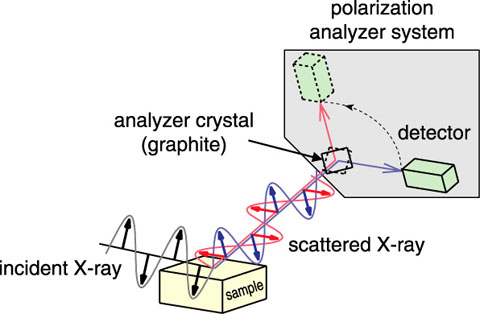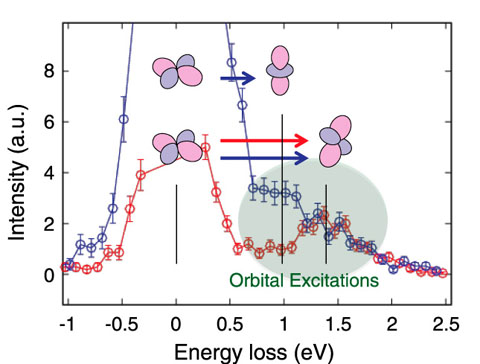
Fig.4-10 Schematic view of polarization analyzer installed at BL11XU at SPring-8

Fig.4-11 Polarization-analyzed resonant inelastic X-ray scattering spectra of KCuF3
Strongly correlated transition metal compounds attract great interest because they exhibit a variety of interesting phenomena such as high-temperature superconductivity in cuprates and colossal magnetoresistance in manganites. It is widely recognized that the orbital degree of freedom of the d electrons often plays a crucial role in the occurrence of these phenomena. For example, it controls the anisotropy of the electron mobility and propagation of interactions. Generally, orbital excitations, where the orbital state changes by gaining energy, are difficult to observe by conventional optical spectroscopy techniques because they are dipole-forbidden. Resonant inelastic X-ray scattering (RIXS) using brilliant synchrotron radiation X-rays is a potent method to measure orbital excitations. However, various excitations are often entangled in the spectrum of RIXS, and it has been difficult to distinguish between them experimentally so far.
In order to identify the orbital excitations, we utilize the polarization, which is an inherent and important characteristic of the photon, by developing a polarization analyzer for the scattered X-rays in RIXS. The analyzer is schematically shown in Fig.4-10. So far, most RIXS studies have focused on energy and momentum dependencies, while polarization has been overlooked. Incident X-rays emitted from SPring-8 are horizontally polarized, and the polarization of the scattered X-rays is analyzed by rotating the analyzer crystal and the detector about the axis of the beam.
Fig.4-11 shows polarization-analyzed RIXS spectra of KCuF3, which is an archetypal material with orbital order. Orbital excitations are observed at 1.0∼1.5 eV. The 1.4 eV peak of the red curve corresponds to the excitation indicated by the thick red arrow. On the other hand, in addition to the peak at 1.4 eV, a spectral weight exists around 1.0 eV for the blue curve, and it comes from the orbital excitation indicated by the short blue arrow in Fig.4-11. This implies that the two orbital excitations show clear dependence on the scattered photon polarization. The dependence can be interpreted on the basis of a phenomenological consideration of the symmetry of the RIXS process that yields a necessary condition for observing the excitations.
The proposed technique enables us to identify electronic excitations that are closely related to the physical properties in transition metal compounds independently of the parameters of theoretical models, since the symmetry of the orbital states is rigorously connected to the polarization of the photon. The technique is expected to facilitate the understanding of attractive physical properties and functions of transition metal compounds.